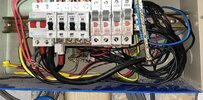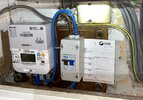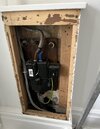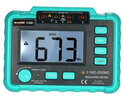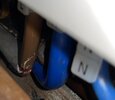I was round my dads house yesterday to do a couple of jobs & noticed a card on top of his gas meter (he had smart meters fitted aprox 4 years ago) warning there was no earth bonding. This rang some alarm bells, unfortunately my old dad couldn't remember anything about this so I decided to try & find out what was going on.
Long story short version of what I found after poking around:
Distribution board is a complete mess, no RCD protection, no sleeves on earths, looks a shambles etc & apparently was done around 40 years ago.
Almost crapped my pants when I saw there was no earth from the supply sheath to the DB, although I could see a cable coming off the sheath & going under the floor. After checking for continuity with a cheap hobby meter he had lying around & some long wire I found I got continuity between the sheath bonding & the DB earth bar so I assume the earth cable I could see going under the floor connects to the water bonding & gas bonding then connects from the gas bonding to the DB earth bar rather than just fitting an earth from the incoming supply to the DB which is directly above it
How worried should I be about the state of his electrics & what would be the recommended course of action? I have a feeling a full re-wire will be recommended but convincing my old dad to get one done would be another matter altogether.
Long story short version of what I found after poking around:
Distribution board is a complete mess, no RCD protection, no sleeves on earths, looks a shambles etc & apparently was done around 40 years ago.
Almost crapped my pants when I saw there was no earth from the supply sheath to the DB, although I could see a cable coming off the sheath & going under the floor. After checking for continuity with a cheap hobby meter he had lying around & some long wire I found I got continuity between the sheath bonding & the DB earth bar so I assume the earth cable I could see going under the floor connects to the water bonding & gas bonding then connects from the gas bonding to the DB earth bar rather than just fitting an earth from the incoming supply to the DB which is directly above it
How worried should I be about the state of his electrics & what would be the recommended course of action? I have a feeling a full re-wire will be recommended but convincing my old dad to get one done would be another matter altogether.



